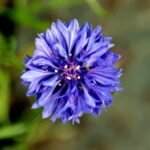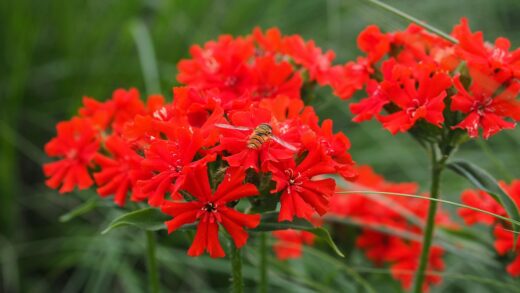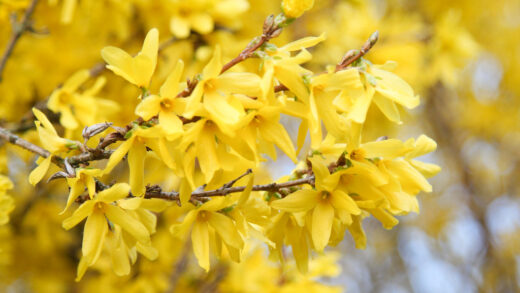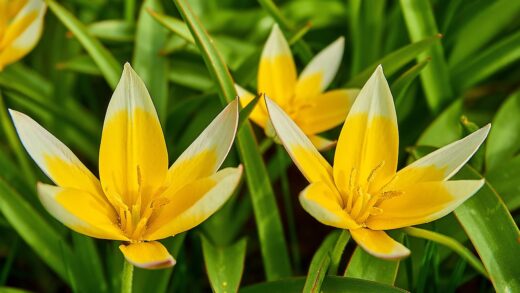The watering and fertilizing of amaryllis

Proper watering and fertilization are fundamental pillars of successful amaryllis care, directly influencing the plant’s health, vigor, and ability to produce its stunning floral displays. These two practices are intrinsically linked to the plant’s annual growth cycle, requiring a dynamic approach that adapts to its changing needs. Understanding when to provide water and nutrients, and just as importantly, when to withhold them, is key to preventing common problems like bulb rot and ensuring the bulb can store enough energy to rebloom year after year. A well-executed watering and feeding regimen is what transforms a simple bulb into a spectacular, recurring showpiece.
The journey begins the moment the bulb is planted. After the initial thorough watering to settle the soil, a period of restraint is crucial. You should water very sparingly, providing just enough moisture to keep the soil from becoming bone dry. This is because, at this stage, the bulb has no leaves to transpire water and its root system is not yet fully developed. Excessive moisture during this early phase is the most common cause of bulb rot, a fatal condition for amaryllis. You should wait until you see the first tangible sign of growth—the tip of a flower stalk or a leaf emerging from the bulb’s neck—before you begin a more regular watering schedule.
Once active growth is underway, the amaryllis will require more consistent moisture to support the rapid development of its leaves and flower stalks. The best practice is to check the soil every few days and water thoroughly whenever the top 2-3 centimeters of the potting mix feels dry to the touch. When you do water, do so deeply, allowing the water to run through the soil and out of the pot’s drainage holes. This ensures that the entire root zone is hydrated and also helps to flush out any accumulated salts from the soil. Always discard the excess water that collects in the saucer to ensure the pot is never left sitting in water.
It is important to apply water directly to the soil surface, avoiding the neck of the bulb where the leaves and stalk emerge. Pouring water directly onto the bulb can allow moisture to collect between its layers, creating an ideal environment for fungal growth and rot. Using a watering can with a long, thin spout can help you to direct the water precisely where it is needed, at the base of the plant. This careful application of water is a simple but highly effective preventative measure that contributes significantly to the long-term health of your amaryllis.
The growing season regimen
During the active growing season, which encompasses the period of flowering and the subsequent development of foliage, the amaryllis has its highest demand for water and nutrients. As the flower stalk elongates and the large leaves unfurl, the plant’s rate of transpiration increases significantly, requiring a more frequent and consistent supply of water. Adhering to the principle of checking the soil’s moisture level regularly is key. During periods of rapid growth or in warmer, drier indoor environments, you may find that you need to water the plant every few days to keep it adequately hydrated.
More articles on this topic
Fertilization during this period is essential for two primary reasons: to support the current spectacular floral display and, more importantly, to replenish the energy reserves within the bulb for future blooms. You should begin fertilizing once the flower stalk is well-established, or immediately after the flowering period has ended. Apply a balanced, water-soluble houseplant fertilizer at half the recommended strength every two to four weeks. A formulation that is slightly higher in phosphorus and potassium can be particularly beneficial, as these nutrients support strong root development and flower production.
The post-flowering period is the most critical time for fertilization. Although the visual spectacle is over, this is when the leaves are working diligently to photosynthesize and channel energy back into the bulb. Neglecting to feed the plant at this stage is a common mistake that often results in the failure to rebloom. Continue your regular feeding schedule throughout the spring and summer as long as the leaves are green and healthy. This consistent nutrient supply ensures the bulb can bulk up and store enough food to initiate the development of the next season’s flower buds.
As late summer approaches, you will need to begin preparing the amaryllis for its necessary dormant period. This involves gradually tapering off both your watering and fertilizing schedules. This reduction in water and nutrients signals to the plant that the growing season is coming to an end and it is time to cease vegetative growth. Allow the soil to dry out more completely between waterings, and then eventually stop watering altogether. This process helps to encourage the leaves to naturally yellow and wither, a clear sign that the bulb is successfully transitioning into its resting phase.
Dormancy and reawakening
The dormant period is a phase of rest and requires a complete cessation of both watering and fertilizing. Once you have stopped watering in the late summer or early autumn and the foliage has died back, the bulb should be left in its dry soil. The pot should then be moved to a cool, dark location where temperatures are consistently between 10-13°C (50-55°F). During this entire resting phase, which should last for at least eight to twelve weeks, it is absolutely critical that the bulb receives no water. Any moisture provided during this time can confuse the bulb, disrupt its dormancy, and potentially induce rot.
More articles on this topic
After the required cool, dark rest, the process of reawakening the bulb begins with the reintroduction of water. Bring the pot out of storage and place it in a warm, well-lit area. Provide the bulb with a single, thorough watering, soaking the soil completely until water drains from the bottom of the pot. This initial drink of water, combined with the increase in temperature and light, serves as the primary signal to break dormancy and initiate a new cycle of growth. This is the only water the plant should receive until you see new growth emerging.
Patience is key during this reawakening phase. After the initial watering, you must once again refrain from watering until you observe the tip of a new flower stalk or the first leaf poking through the top of the bulb. This can take anywhere from a few days to several weeks, depending on the specific variety and the condition of the bulb. Watering before new growth is visible can lead to the same risk of rot that exists when first planting a bulb. The emergence of a green shoot is your green light to resume a regular watering schedule.
Once active growth has commenced, you can transition back to your growing season regimen. Begin watering regularly, allowing the top layer of soil to dry out between applications. You can also resume your fertilization schedule once the new flower stalk is several inches tall. By carefully managing the transition from dormancy back to active growth through controlled watering, you provide the amaryllis with the best possible conditions to produce another magnificent display of flowers, successfully completing its annual cycle.
Recognizing watering issues
Recognizing the signs of improper watering is a crucial skill for any amaryllis grower, as it allows for timely intervention before serious damage occurs. The most common and dangerous issue is overwatering, which typically manifests as yellowing lower leaves that feel soft and limp, not crispy. You might also notice a musty or sour smell coming from the soil, which indicates that it is waterlogged and anaerobic conditions are developing. If the base of the plant or the bulb itself feels soft or mushy, it is a strong indication that bulb rot has set in, a condition which is often irreversible.
Another clear sign of excessive moisture is the presence of fungus gnats, which are small, dark flies that hover around the surface of the soil. These pests thrive in consistently damp conditions and lay their eggs in the top layer of the potting mix. While the adult flies are mostly a nuisance, their larvae can feed on the plant’s roots and the base of the bulb, causing damage and creating entry points for disease. The presence of fungus gnats is a definitive signal that you need to allow the soil to dry out more thoroughly between waterings.
Conversely, while less common, underwatering can also cause problems for your amaryllis. The primary symptoms of a plant that is too dry include wilting or drooping leaves, even when the soil is moist at depth. The leaf edges may also turn brown and crispy, and the overall growth of the plant may be stunted. During the flowering period, insufficient water can cause the flower buds to dry up and fail to open, or it can lead to a significantly shortened bloom time. A quick check of the soil by inserting your finger will confirm if dryness is the issue.
To correct watering issues, you must first accurately diagnose the problem. For an overwatered plant, immediately cease watering and, if possible, move it to a location with better air circulation to help the soil dry out more quickly. You may need to gently remove the bulb from the pot to inspect it for rot. For an underwatered plant, the solution is more straightforward: give it a thorough watering until water runs out the bottom, and then adjust your schedule to be more frequent. Regularly feeling the soil instead of watering on a strict calendar schedule is the most effective way to prevent both over- and underwatering.
Fertilization best practices
When fertilizing your amaryllis, the principle of “less is more” is a good guideline to follow. These plants are not heavy feeders, and excessive fertilization can be more harmful than providing too little. Over-fertilizing can lead to a buildup of salts in the soil, which can burn the plant’s sensitive roots and inhibit its ability to absorb water. It can also promote lush, weak foliage at the expense of flower production. A general best practice is to always dilute a liquid fertilizer to half the strength recommended on the product label.
The timing of fertilizer application is just as important as the amount. You should never fertilize a dormant amaryllis bulb, as it is not in a state of active growth and cannot utilize the nutrients. Fertilization should only begin once a new flower stalk is well on its way, or after the plant has finished blooming. The post-flowering period is when the plant benefits most from feeding, as it is actively working to store energy for the next season. Continue to fertilize throughout the spring and summer, but cease all applications as you begin to prepare the plant for its next dormant period in the late summer.
Choosing the right type of fertilizer is also beneficial for the health of your amaryllis. A balanced, all-purpose liquid houseplant fertilizer is perfectly adequate for the job. Some growers prefer to use a “bloom booster” formula, which has a higher proportion of phosphorus (the middle number in the N-P-K ratio) to encourage flower production. However, a balanced formula will provide all the necessary macro and micronutrients for healthy leaf growth, which is ultimately what fuels the development of future flowers. Both organic and synthetic fertilizers are effective, so the choice can be based on personal preference.
It is also important to apply fertilizer to soil that is already moist. Applying liquid fertilizer to dry soil can be too concentrated for the roots and can cause chemical burn. A good practice is to first water the plant thoroughly with plain water, allow it to drain for about an hour, and then apply the diluted fertilizer solution. This ensures that the nutrients are delivered to a well-hydrated root system that can absorb them efficiently without sustaining damage. This simple two-step process can make a significant difference in the effectiveness and safety of your fertilization routine.

















